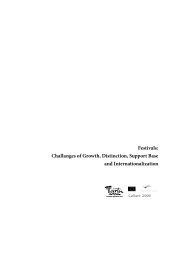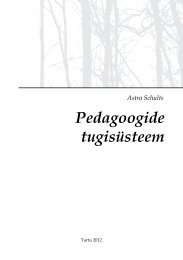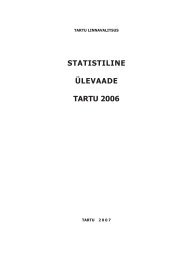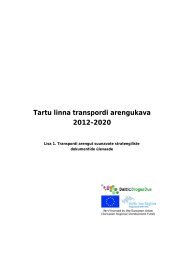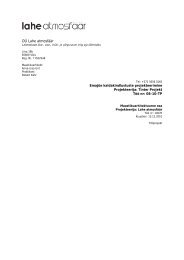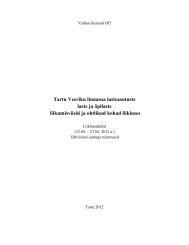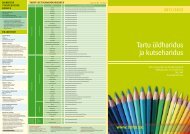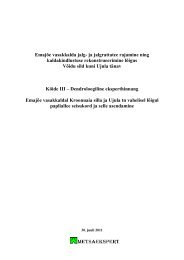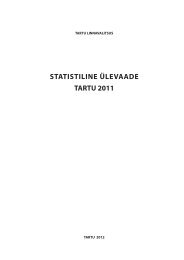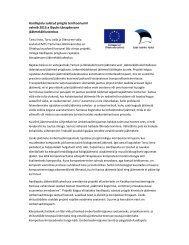Festivals - Fondazione Fitzcarraldo
Festivals - Fondazione Fitzcarraldo
Festivals - Fondazione Fitzcarraldo
You also want an ePaper? Increase the reach of your titles
YUMPU automatically turns print PDFs into web optimized ePapers that Google loves.
Beside this policy of good will and generosity towards the local artistic community,<br />
a responsible and intelligent festival director will seek to develop a relationship with<br />
the infrastructure of the civic society in its own place and thus deploy the festival for<br />
the creation both of the artistic and social capital. Originally, the tradition of festivals<br />
is linked to the local festivities, celebrations and communal holidays which provided<br />
models for the intermingling of ritual and artistic elements and symbolic rendering of<br />
social relations, hierarchies and privileges. Today, most festivals have lost this celebratory<br />
energy and the capacity to involve in the festive manner various constituencies<br />
of the local community. One could also argue that most festivals cater to a very small<br />
social group of artistic and intellectual elite or to transitory social groups such as<br />
tourists rather than to a broad community of the local residents. In order to justify the<br />
disposition of public subsidies, public authorities with increased frequency demand<br />
festivals to enlarge and diversify their core audience, to prove that they are making<br />
their best to surpass the boundaries of an elite public.<br />
To fulfill this mandate simply as a marketing operation usually is not enough. Local<br />
communities contain too much divergence and too many specific constituencies to be<br />
approached through a marketing mix alone. Clever festival directors have learned that<br />
they need to identify and nurture their own ambassadors in various constituencies<br />
and that they can extract more curiosity and engagement by interacting with carefully<br />
chosen local civic groups. Building a relationship means in turn sharing responsibility<br />
and making the members of local civic groups participants and not just consumers.<br />
That was the strategy deployed by Peter Sellars in 1990 and 1992 in the Los Angeles<br />
International Festival, when he decided to anchor the visiting theater companies<br />
from the Pacific Rim in many ethnic neighbourhoods of Los Angeles. Sellars in fact<br />
promoted the artistic and social infrastructure of these ethnic neighbourhoods into<br />
the role of a primary host, thus ensuring the critical mass of curiosity for the work<br />
imported but also creating a tension between traditional and innovative arts, from the<br />
homeland and from the diasporic communities.<br />
In preparing the program of Copenhagen Cultural Capital of Europe 1997, Trevor<br />
Davies started already in 1993 and consciously focused on young teenagers who were<br />
expected to become his prime audience when the mega-festival of almost 11 months<br />
length was to start few years later. Equally, he realized the constraints of Copenhagen<br />
as a relatively small city and set up collaborative ties with some 50 neighbouring<br />
communities, working with their public officials in order to link them to his complex<br />
programming. Generational focus and regionalisations were his strategies to sustain a<br />
festival of huge programming volume. And yet, as it often happens with the Cultural<br />
Capitals of Europe program, the saturation point of the audience was reached in a few<br />
months only, much before the end of the festivities.<br />
34<br />
Within a modern metropolis, a festival could be seen as a tool to rephrase centre/periphery<br />
polarisations and dichotomies. LIFT (London International Festival of Theatre)<br />
decided some years ago to bring challenging contemporary art work to the tough



